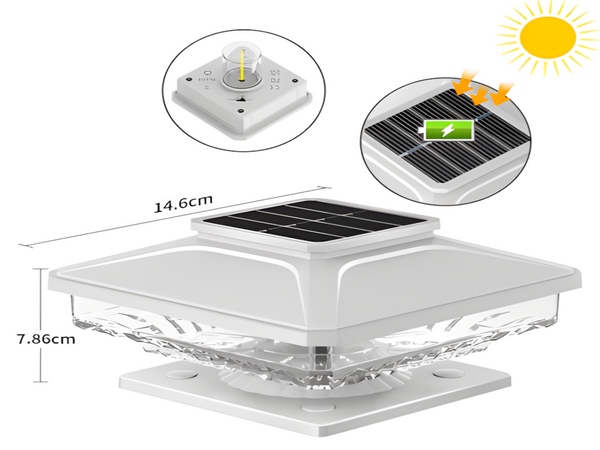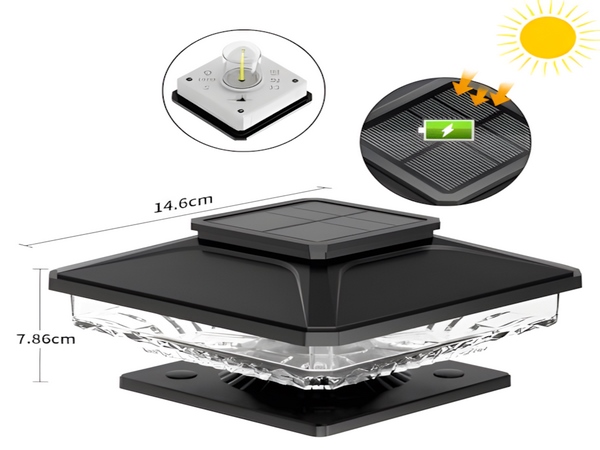
Solar Street Lights
Are widely used in modern cities and rural construction. A complete solar street light system consists of solar panels, light sources, batteries, controllers, lamp posts, and protective cables. Since solar street lights operate in outdoor environments, various unforeseen issues may arise. These problems might seem minor but can be quite troublesome for users, and aside from professional technicians, others may find it difficult to resolve them.
Today, let the street lights teach you how to troubleshoot some common issues, allowing even non-professionals to easily solve common problems with solar street lights.
1. Controller Testing:
A red light on the controller indicates charging, and a flashing red light indicates that the battery is fully charged, with the controller charging the battery with a small pulse current.
2. Controller Yellow Light:
Indicates that the battery is discharged and cannot illuminate normally. If you disconnect and reconnect the battery wire, the light will illuminate. This indicates that the controller detects the battery has had an increase in capacity from a day of charging but is not the battery float voltage.
3. Solar Panel:
If the solar panel connections are not secure, it may cause improper charging, usually indicated by having voltage (voltage meter test) with an open circuit voltage of above 17.5V but no current. This phenomenon indicates that the solar panel wires are not properly connected, and the method can be checked directly by opening the black electrical cover on the back of the panel and using voltage and current meters for data detection. If there is no current detected from the aluminum foil of the solar panel, it indicates that the solar panel needs to be replaced.

4. Battery:
The battery should charge and discharge normally. If the voltage is above 12V while connected to the lamp (load) and the voltage drops shortly after, it indicates the battery is damaged. Additionally, if water enters the waterproof casing, it may cause a short between the positive and negative poles, resulting in incorrect voltage readings, typically fluctuating between high and low voltages. If the voltage drops below 10V due to excessive discharge caused by water ingress, the battery may work normally after a proper small current cycle charge and discharge. However, if it does not function normally, it needs to be replaced. Lead-acid batteries typically start showing decreased capacity after three years, which may advance the daily switch-off time or reduce duration on rainy days; this is considered normal.
5. LED Light Source:
The light source operates normally under proper battery voltage conditions. If the light does not illuminate, you can connect the positive and negative terminals of the lamp directly to the battery terminals for testing. If the light source lights up, it signifies that the lamp is functioning well and the controller is not supplying power to the lamp. This situation occurs when there is prolonged rainy weather and insufficient battery voltage, as the controller protects the battery at voltages of 11.3V and 22.6V. If the battery voltage falls below these levels, the controller will forcibly turn off the light. The lamp will only function correctly once the battery is recharged and the voltage rises to 12V (24V). If the lamp connected directly to the battery still does not light, it indicates an issue with the lamp, likely due to a malfunction in the control circuit.
6. Lamps are on during the day:
If the lights cannot be turned off during the day, it indicates that the solar panel did not charge the battery through the controller. You can check the solar panels and controllers using the methods 1 and 3. Another reason could be that the controller was connected incorrectly, leading to component failure.
7. Damaged wiring:
Since the solar lights use “low voltage wires,” each cable consists of many thin copper wires. If we inadvertently compress the copper wires in the insulation layer during installation, it may not be visible, but there may only be voltage without current. As a result, the lights may fail to illuminate after a few days (no current leading to insufficient charging, and the battery is depleted). Additionally, if the insulation layer of the wire is damaged during installation, the wiring can conduct through the lamp post, causing short circuits, leading to situations where the solar panel cannot charge, the battery sparks, or the lamp does not light.

To learn more about the prices of
solar street lights
, please inquire with the street light team.
Bitpott Solar Street Light Manufacturer
specializes in the research, production, and sales of solar and LED outdoor lighting, with many years of production experience and advanced equipment, ensuring quality, reasonable prices, and configurations. For inquiries about
LED solar street light prices
, please contact the street light team.



